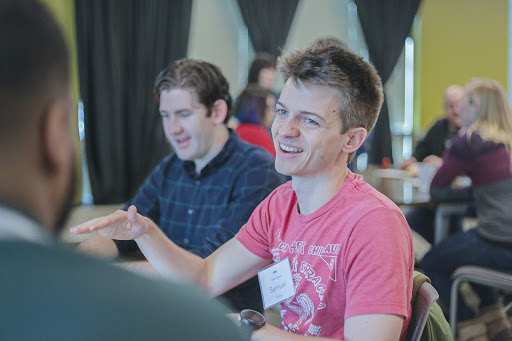Some of the most well-respected minds in human happiness research were recently surveyed about the best behaviors to increase happiness. Money, fame, and power pale in comparison to a simple practice that everyone is capable of integrating into their lives. These experts noted the benefits of exercise two times in the top five behaviors for happiness (Buettner, Nelson, and Veenhoven, 2020). And it’s not just happiness; physical activity helps our brains function better in a few key ways.
According to Harvard psychiatrist John Ratey, exercise stimulates development of a protein called brain-derived neurotrophic factor (or BDNF), which along with encouraging connections between brain cells also “encourages… the creation of new cells” (Medina, 2018). Colloquially, we might think of BDNF as Miracle-Gro for brains.
One potential reason brains seem to respond so positively to exercise is that our brains evolved while we were highly physically active as a species. By some accounts, early humans hunted animals simply by chasing them to the point of exhaustion. One of Ratey’s colleagues at Harvard, anthropologist Richard Wrangham, says that early humans traveled up to 12 miles a day (Townsend, 2005). Modern humans are far more sedentary on average, taking our brains out of the environment in which they have evolved to thrive.
In some ways it is a wonder that brains evolved at all. Though it makes up only around 2% of our body mass, the brain can use up to 20% of the energy we use in a day. In a time of energy scarcity, brains proved to be incredibly powerful tools that enabled our species to have evolutionary success. Understanding energy is key to understanding why exercise is so helpful for mental health.
We undergo cellular respiration to use energy stored in our bodies. In this process, a series of reactions occur which turn stored energy into energy that our cells can actually use (called ATP). This process must occur in the presence of oxygen, and it produces some waste products as a result. Blood carries oxygen to our cells and then carries waste away from them. Because brains use so much energy, their functioning is heavily dependent on the body’s ability to deliver blood. Regular exercise causes our brains to operate more efficiently because it improves blood flow.
As a more direct example of how exercise can help the brain, consider this story from early in my college career. I was struggling to determine how to rebalance an AVL tree. I sat for hours debugging, drawing on whiteboards, and trying very hard to solve the problem. Frustrated after making no progress for a good chunk of time, I decided to go for a run. A few miles down the bank of the Brazos River I realized my mistake, and upon returning to my desk I solved the problem easily.
These experiences are universal, and there’s a scientific reason for it. In her book A Mind for Numbers, Barbara Oakley describes two modes the brain uses: a focused mode and a diffused mode. These are more or less what they sound like. The focused mode involves concentrating on difficult tasks. The diffused mode comes into play when an idea is left to simmer at the back of the mind. While the benefits of focus have been examined well (see, for instance, the excellent Deep Work by Cal Newport), this latter mode (the diffused mode) is underappreciated.
When I was repeatedly attacking the problem, I was using that focused mode. Particular, closely-related networks of neurons in my brain lit up as I desperately searched for a solution. But unfortunately, this focus was actually hindering my progress rather than helping it! This is sometimes referred to as the Einstellung effect, in which “an idea you already have in mind… prevents a better idea or solution from being found” (Oakley, 2018). This is what I mean by saying the diffused mode is underappreciated: we typically think that solving a problem requires us to focus on it. In fact, the opposite is often the case; we need to shift our brains into the diffused mode.
In the diffused mode our brains are able to find connections between ideas and concepts that are far from each other, often enabling significant breakthroughs. The surprising result of all of this is that a twenty minute jog is often more helpful to solving a challenging problem than an hour of deep concentration.
Our brains are at their best when we are regularly exercising. Rather than thinking of exercise as a kind of medical necessity or a way to lose weight, we should think of exercise as a gift we give to ourselves. I’m not going to pretend that it’s always easy, but exercise consistently provides the highest return on my time of any activity I regularly partake in. Try it out. Stick with it. Your brain will thank you.
Sources:
- Buettner, D., Nelson, T., & Veenhoven, R. (2020). Ways to Greater Happiness: A Delphi Study. Journal of Happiness Studies. doi: 10.1007/s10902-019-00199-3
- Medina, J. (2018). Brain rules for ageing well: 10 principles for staying vital, happy, and sharp. Scribe.
- Oakley, B. A. (2014). A mind for numbers: how to excel at math and science (even if you flunked algebra). Penguin.
- Townsend, E. (2005). The Cooking Ape: An Interview with Richard Wrangham. Gastronomica, 5(1), 29–37. doi: 10.1525/gfc.2005.5.1.29
